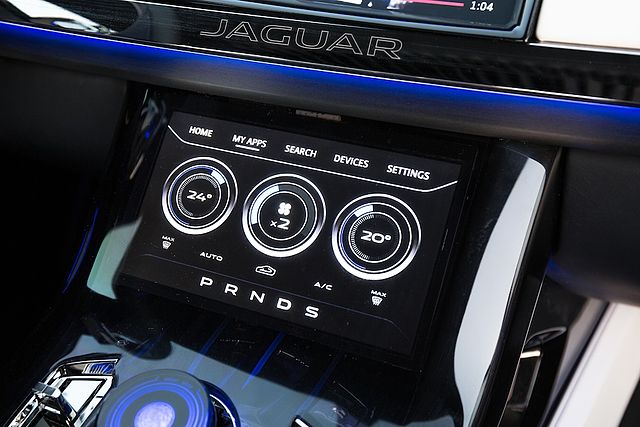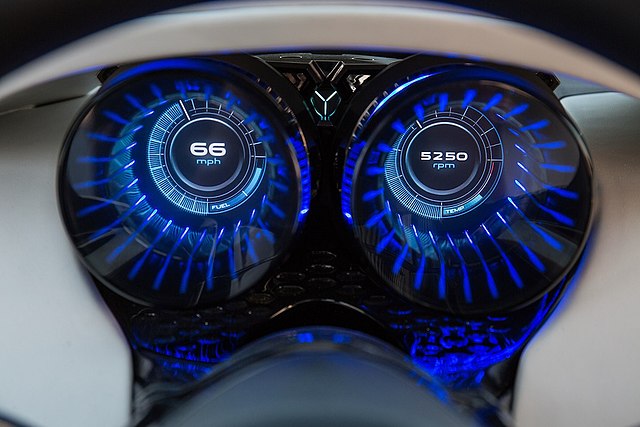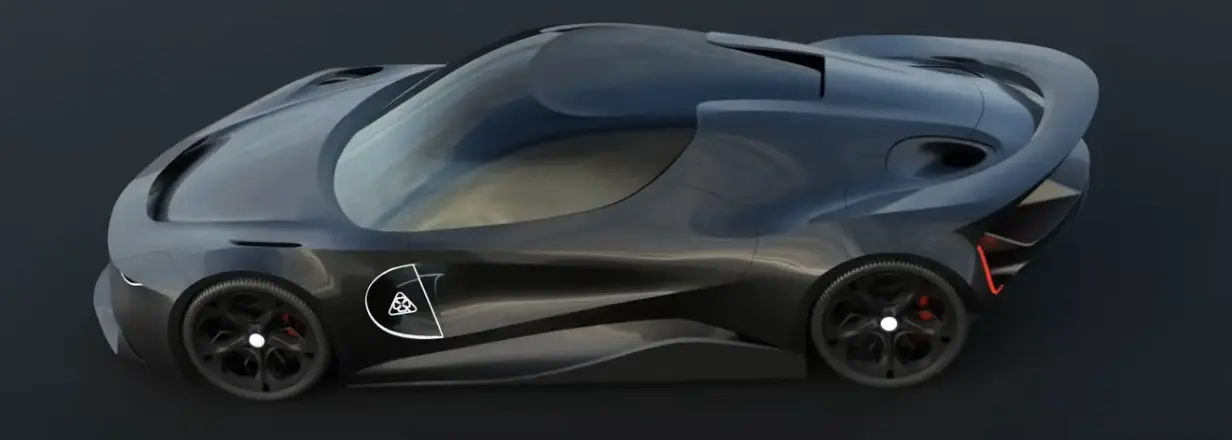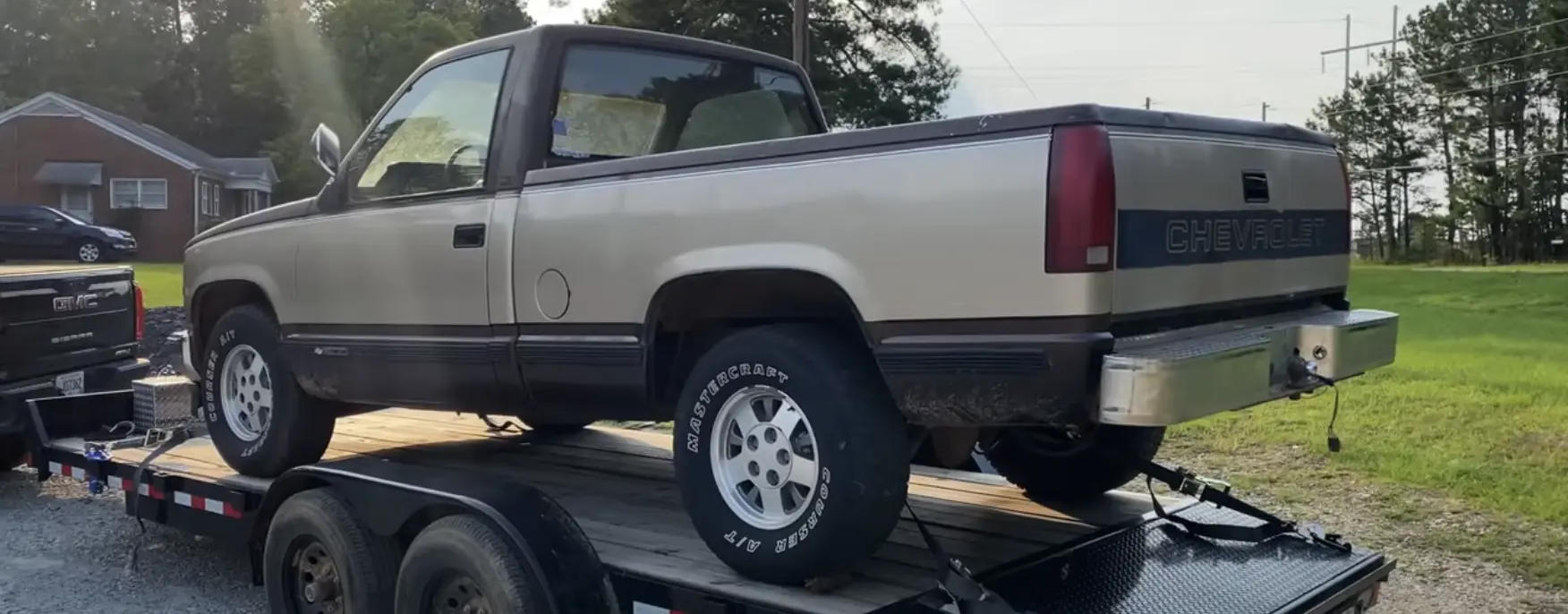As technology progresses, the evolution of car dashboards and displays are likely to follow a trajectory that emphasizes enhanced interactivity, connectivity, and personalization, all while ensuring safety and efficiency. We’re likely to see a shift towards fully digital and highly customizable interfaces that integrate seamlessly with the driver’s digital lifestyle, providing real-time information and controls not just for the vehicle’s functions but also for connected devices and online services.
Dashboards have already entered the digital age, but they could soon enter the space age, projecting images (such as the outlines of the road in low-visibility conditions) onto the road in front of you as you drive. Of course, carmakers have anticipated this shift going back at least 20 years, as concept cars like the ones in this gallery show us.
One thing we pay attention to our dashboards for is information about how our car is functioning. When something goes wrong, one of any number of warning lights can give us a heads up. As dashboards become more and more futuristic, and as cars themselves become more technologically advanced, the dashboard display could give us much more specific feedback about how our car systems are functioning. Not long ago the only way to tell how much pressure was in your tire was by checking with a mechanical gauge, and now most cars come standard with that information displayed on the dashboard. These kinds of data points are set to become increasingly common.
Overall, the future of car dashboards and displays is set to become more immersive, interactive, and integrated into the fabric of our digital lives, transforming the driving experience in ways that prioritize safety, convenience, and personalization.



In the future, perhaps our cars will deliver a simple notification to us over the dashboard when something is amiss. Maybe it will even be able to communicate with our mechanic and schedule a time for us to come in for maintenance and repairs with the touch of a button. Until then, we’ve got an array of warning and notification lights on our dashboard to tell us when something requires our attention. But if you don’t know what these lights mean it can feel a bit like reading a foreign language. In case you don’t know, here are what those lights on your dashboard are trying to tell you:
Check Engine Light (CEL)
This light, often depicted as an engine outline, can indicate a range of issues from minor to serious. It may light up due to a loose gas cap, faulty oxygen sensor, or more severe engine problems.
Action: If it’s steady, get your car checked soon; if blinking, this often indicates a more serious issue, and you should pull over and call for assistance.
Battery/Charging Alert
Shown as a battery symbol, this light indicates a charging system fault, which could be due to a failing battery, alternator, or electrical system issues.
Action: Turn off any non-essential electrical devices and seek immediate service as soon as possible.
Oil Pressure Warning

Depicted as an oil can, this light warns of low oil pressure, which could damage the engine if ignored. In many models this light can either flash yellow or red, with yellow often meaning that the oil level is low and red indicating a problem with the actual pressure, which is more urgent.
Action: Stop the vehicle as soon as safely possible and check the oil level. If low, add oil; if the light remains on or if the light is red, it may indicate a more serious issue requiring professional service. A diagnostic check is recommended.
Engine Temperature Warning
Illustrated by a thermometer in liquid, this light signifies that the engine is overheating. Driving with an overheated engine is bad news, so you’ll want to deal with this as quickly as possible.
Action: Pull over safely, turn off the engine, and allow it to cool before checking coolant levels or for leaks. Do not attempt to open the radiator cap while hot.
Tire Pressure Warning Light (TPMS)
A light that looks like an exclamation mark inside a tire profile indicates that one or more of your tires are significantly underinflated, which could lead to tire failure. From time to time these lights can be triggered by changes in altitude as you drive, but it’s always worth making absolutely sure. Carry a mechanical tire pressure gauge in your car at all times so that you can double check tire pressure.
Action: Check tire pressures and inflate them to the recommended levels. Visually inspect tires for any signs of debris, such as a nail, stuck in them. If you inflate your tire and it begins to lose pressure, even over an extended period of time, have it looked at by a professional and consider putting on a spare in the meantime.
ABS Warning Light
Displayed as “ABS,” this light indicates a problem with the Anti-lock Braking System, which could affect the car’s braking efficiency in an emergency.
Action: While regular brakes should still work, have the vehicle checked by a professional as soon as possible.
Airbag Indicator

Shown as a seated figure with a circle in front, this light means there is a problem with one or more of the vehicle’s airbags.
Action: Your life-saving airbags may not deploy in a crash, so it’s important to have this checked as soon as you can.
Traction Control Light
Depicted as a car with skid marks, this light indicates the traction control system is activated due to slippery conditions, or is malfunctioning.
Action: If the light stays on under normal driving conditions, the system needs to be checked because of a problem. If road conditions are slippery, make sure you drive slowly and stay alert.
Brake System Warning Light
This light, shown as an exclamation mark inside a circle (sometimes with “BRAKE”), indicates a potential issue with the brake system, such as low brake fluid or a malfunction in the braking system. This light can also display a circle with a P, meaning you simply engaged the parking/emergency brake and forgot to disengage it.
Action: If you see a circle with a P, check that the parking brake is not on. If a circle with an exclamation mark, check brake fluid levels and, if adequate, seek professional assistance as it could indicate a more serious problem.
Power Steering Warning Light
Represented by a steering wheel next to an exclamation mark, this indicates a problem with the power steering system, which if not working properly makes the wheel harder to turn.
Action: Seek professional service as driving could be difficult, especially at low speeds.

Fuel Light
The fuel light is typically triggered when your gas tank reaches 10% of its total capacity, letting you know that you need to stop and refuel or risk running out of fuel. Driving your vehicle with low fuel, or to the point where it runs out completely, is terrible for your car and potentially dangerous to you. In cold weather, you should consider keeping your tank at least half full at all times.
Action: Stop and refuel as soon as possible. If you are more than 20 miles from a gas station, consider pulling over and working out a way to get gas brought to you so that you can make it there with no issues. This is one that’s best managed through prevention. On long drives pay attention to your fuel level and fill up before you get low.
Maint Reqd Light
In older cars, this mechanical light is triggered when the odometer reaches a certain number, often 5000 miles, since it was last reset. This simply means your car is due for an oil change service.
Action: Get your oil change or do it yourself. If you go to a professional they will likely conduct a routine inspection of your vehicle, but if you do it yourself it’s also a good time to make sure everything is in good working order.
When any of these lights come on, it’s important to address the issue promptly to avoid potential safety hazards or costly repairs. For lights that indicate immediate dangers, such as the oil pressure or engine temperature warnings, it’s crucial to stop driving and resolve the issue to prevent damage to the vehicle. Regular maintenance can help prevent some of these issues from occurring.





